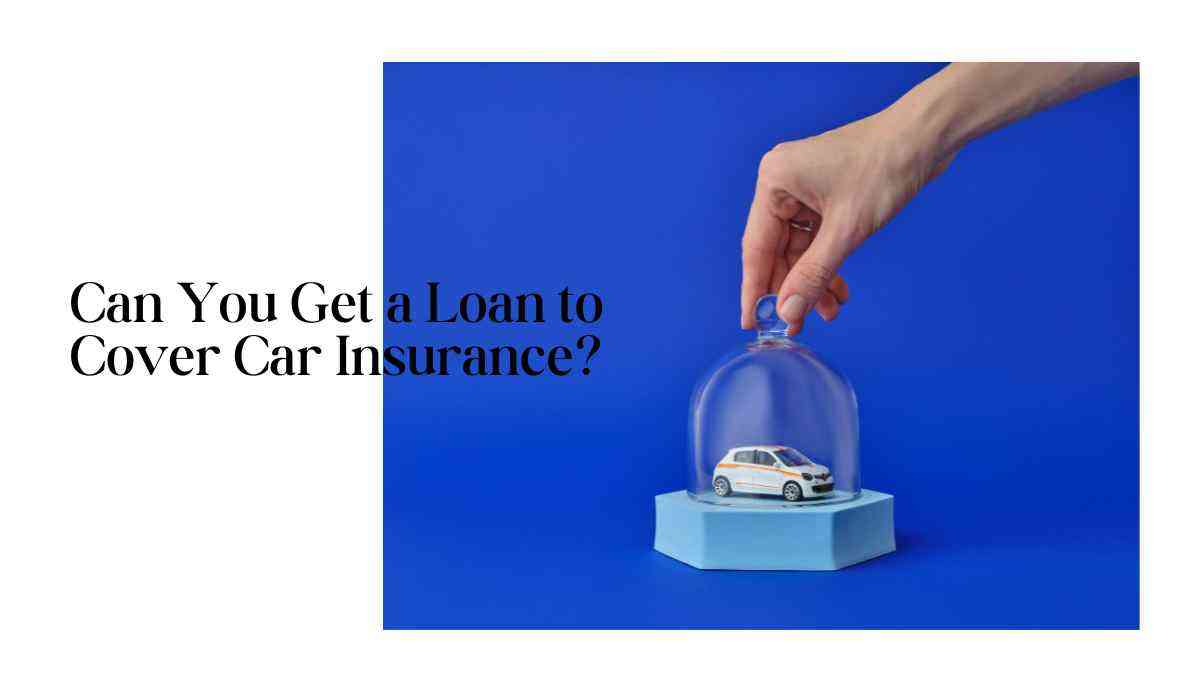
Can You Get a Loan to Cover Car Insurance?
Car insurance is a necessary expense, but for many people, paying the premium upfront can be a financial burden. This has led some to wonder whether they can take out a loan to cover car insurance costs. While the answer is yes, it’s essential to understand the pros, cons, and alternatives before proceeding. This comprehensive guide will equip you with all the necessary information to make an informed decision.
Understanding Premium Financing
Many insurance companies offer premium financing, allowing policyholders to break down their annual premium into manageable monthly payments. While this may sound convenient, there are a few key factors to consider:
- High Interest Rates: Premium financing often comes with steep interest rates, typically ranging from 20% to 40% APR. These rates can significantly increase the total cost of your insurance.
- Additional Fees: Some insurers charge administrative fees for setting up installment plans. These fees can further add to the cost of financing your premium.
Important Tips for Premium Financing:
- Review Terms Carefully: Always read the fine print to understand interest rates and additional charges.
- Compare Costs: Evaluate the cost of financing versus the potential savings of paying upfront.
- Budget Wisely: Ensure monthly payments fit within your overall financial plan.
Alternative Ways to Cover Car Insurance Costs
If financing your car insurance seems too expensive, there are other strategies you can explore:
1. Pay Annually
Paying your premium in one lump sum can save you money, as insurers often offer discounts for upfront payments. This eliminates the need for financing and associated interest.
- Why It Works: Insurers reward customers for paying upfront as it reduces their administrative costs.
- Pro Tip: Plan ahead and save monthly to accumulate the lump sum for the next year’s premium.
2. Use a 0% Interest Credit Card
A credit card with a 0% introductory APR can be a smart way to cover your premium without incurring interest. Ensure that you can pay off the balance within the promotional period to avoid high rates later.
- Benefits: No interest for a set period, giving you flexibility.
- Caution: Late payments or failure to repay the balance can result in high penalties and affect your credit score.
3. Seek Discounts
Ask your insurance provider about discounts that may apply to you. Common discounts include:
- Multi-Policy Discounts: Bundling auto and home insurance can reduce costs.
- Good Driver Discounts: Safe driving records can lead to substantial savings.
- Low Mileage Discounts: Driving less can qualify you for reduced rates.
- Safety Feature Discounts: Vehicles equipped with anti-theft devices or advanced safety features often qualify for discounts.
4. Adjust Your Coverage
Consider reviewing your policy and adjusting coverage limits or deductibles to lower your premium. However, ensure that your coverage still meets legal requirements and provides adequate protection.
- Example: Increasing your deductible can lower your premium but may result in higher out-of-pocket costs if you need to file a claim.
5. Shop Around
Insurance rates vary significantly between providers. Take time to compare quotes from multiple companies to find the most competitive rates.
- Pro Tip: Use online comparison tools to quickly gather and evaluate multiple quotes.
- Insight: Look beyond the premium cost and consider the provider’s reputation, customer service, and claims handling.
Taking Out a Personal Loan
If you’re considering a personal loan to cover your car insurance, here are the key points to weigh:
Pros:
- Fixed Monthly Payments: A personal loan provides predictable payments over a set period.
- Potentially Lower Interest: Depending on your credit score, you may qualify for a lower interest rate than what’s offered by premium financing.
- Flexibility: You can use the loan for other expenses in addition to car insurance.
Cons:
- Additional Debt: Taking on a loan adds to your overall financial obligations.
- Impact on Credit: Applying for a loan may temporarily lower your credit score.
- Repayment Timeline: You’ll be locked into monthly payments, even if you no longer own the insured vehicle.
Tips for Using a Personal Loan:
- Shop Around: Compare interest rates and terms from different lenders to find the best deal.
- Borrow Responsibly: Avoid borrowing more than necessary.
- Plan for Repayment: Have a clear repayment strategy to avoid defaulting.
Considerations Before Borrowing
Before taking out a loan or using any other financing method, ask yourself:
- Can I Afford the Monthly Payments?
- Ensure your income can cover both the loan repayment and other essential expenses.
- Is Financing the Most Cost-Effective Option?
- Compare the total cost of financing against paying upfront or using alternative methods.
- Are There Alternatives I Haven’t Explored?
- Consider seeking discounts, adjusting coverage, or using savings.
Expert Advice:
- Consult a Financial Advisor: Ensure your decision aligns with your financial goals.
- Avoid Hidden Costs: Read all loan and insurance terms carefully to avoid unexpected fees or conditions.
Final Thoughts
While you can take out a loan to cover car insurance, it’s not always the best option. Alternatives like paying annually, using a 0% interest credit card, or finding discounts can help you save money without incurring debt. Always weigh the costs and benefits before making a decision, and remember that proper planning can prevent financial stress in the future.
Key Takeaways:
- Explore all available options to minimize costs.
- Avoid high-interest financing unless absolutely necessary.
- Take proactive steps, such as shopping around and seeking discounts, to manage your insurance expenses effectively.
By making informed choices, you can ensure that your car insurance remains affordable and manageable, allowing you to focus on other financial goals.
